Human Spaceflights to the Moon
![]()
International Flight No. 36Apollo 13USA |
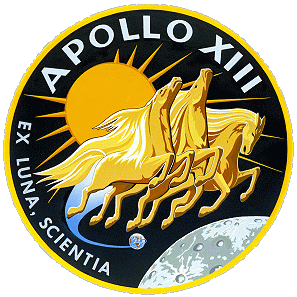 |
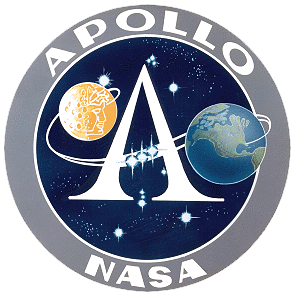 |
![]()
Launch, orbit and landing data
walkout photo |
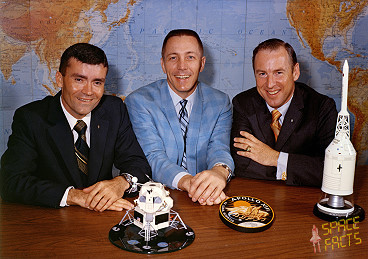 |
||||||||||||||||||||||
alternative crew photo |
|||||||||||||||||||||||
alternative crew photo |
|||||||||||||||||||||||
alternative crew photo |
Crew
| No. | Surname | Given names | Position | Flight No. | Duration | Orbits | |
| 1 | Lovell | James Arthur, Jr. "Shaky" | CDR | 4 | 5d 22h 54m 40s | 1,5 | |
| 2 | Swigert | John Leonard, Jr. "Jack" | CMP | 1 | 5d 22h 54m 40s | 1,5 | |
| 3 | Haise | Fred Wallace, Jr. "Freddo" | LMP | 1 | 5d 22h 54m 40s | 1,5 |
Crew seating arrangement
|
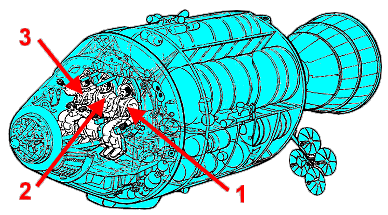 |
|
||||||||||||||||
Backup Crew
|
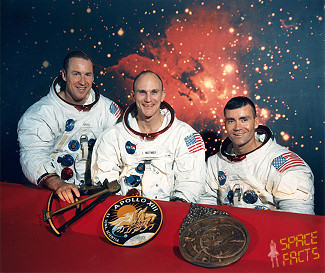 |
||||||||||||||||||||
alternative crew photo |
Support Crew
|
|||||||||||||
Hardware
| Launch vehicle: | Saturn V (SA-508) |
| Spacecraft: | Apollo (CSM-109 „Odyssey“ / LM-7 „Aquarius“) |
Flight
|
Launch from Cape Canaveral (KSC) and
landing in the South Pacific between New Zeeland and Samoa. The Command Module (CM) was a conical pressure vessel with a maximum diameter of 3.9 m at its base and a height of 3.65 m. It was made of an aluminum honeycomb sandwich bonded between sheet aluminum alloy. The base of the CM consisted of a heat shield made of brazed stainless steel honeycomb filled with a phenolic epoxy resin as an ablative material and varied in thickness from 1.8 to 6.9 cm. At the tip of the cone was a hatch and docking assembly designed to mate with the lunar module. The CM was divided into three compartments. The forward compartment in the nose of the cone held the three 25.4 m diameter main parachutes, two 5 m drogue parachutes, and pilot mortar chutes for Earth landing. The aft compartment was situated around the base of the CM and contained propellant tanks, reaction control engines, wiring, and plumbing. The crew compartment comprised most of the volume of the CM, approximately 6.17 cubic meters of space. Three astronaut couches were lined up facing forward in the center of the compartment. A large access hatch was situated above the center couch. A short access tunnel led to the docking hatch in the CM nose. The crew compartment held the controls, displays, navigation equipment and other systems used by the astronauts. The CM had five windows: one in the access hatch, one next to each astronaut in the two outer seats, and two forward-facing rendezvous windows. Five silver/zinc-oxide batteries provided power after the CM and SM detached, three for re-entry and after landing and two for vehicle separation and parachute deployment. The CM had twelve 420 N nitrogen tetroxide/hydrazine reaction control thrusters. The CM provided the re-entry capability at the end of the mission after separation from the Service Module. The Service Module (SM) was a cylinder 3.9 meters in diameter and 7.6 m long which was attached to the back of the CM. The outer skin of the SM was formed of 2.5 cm thick aluminum honeycomb panels. The interior was divided by milled aluminum radial beams into six sections around a central cylinder. At the back of the SM mounted in the central cylinder was a gimbal mounted re-startable hypergolic liquid propellant 91,000 N engine and cone shaped engine nozzle. Attitude control was provided by four identical banks of four 450 N reaction control thrusters each spaced 90 degrees apart around the forward part of the SM. The six sections of the SM held three 31-cell hydrogen oxygen fuel cells which provided 28 volts, two cryogenic oxygen and two cryogenic hydrogen tanks, four tanks for the main propulsion engine, two for fuel and two for oxidizer, and the subsystems the main propulsion unit. Two helium tanks were mounted in the central cylinder. Electrical power system radiators were at the top of the cylinder and environmental control radiator panels spaced around the bottom. The lunar module (LM) was a two-stage vehicle designed for space operations near and on the Moon. The spacecraft mass of 15,065 kg was the mass of the LM including astronauts, propellants and expendables. The dry mass of the ascent stage was 2180 kg and it held 2639 kg of propellant. The descent stage dry mass was 2034 kg and 8212 kg of propellant were onboard initially. The ascent and descent stages of the LM operated as a unit until staging, when the ascent stage functioned as a single spacecraft for rendezvous and docking with the command and service module (CSM). The descent stage comprised the lower part of the spacecraft and was an octagonal prism 4.2 meters across and 1.7 m thick. Four landing legs with round footpads were mounted on the sides of the descent stage and held the bottom of the stage 1.5 m above the surface. The distance between the ends of the footpads on opposite landing legs was 9.4 m. One of the legs had a small astronaut egress platform and ladder. A one meter long conical descent engine skirt protruded from the bottom of the stage. The descent stage contained the landing rocket, two tanks of aerozine 50 fuel, two tanks of nitrogen tetroxide oxidizer, water, oxygen and helium tanks and storage space for the lunar equipment and experiments, and in the case of Apollo 15, 16, and 17, the lunar rover. The descent stage served as a platform for launching the ascent stage and was left behind on the Moon. The ascent stage was an irregularly shaped unit approximately 2.8 m high and 4.0 by 4.3 meters in width mounted on top of the descent stage. The ascent stage housed the astronauts in a pressurized crew compartment with a volume of 6.65 cubic meters which functioned as the base of operations for lunar operations. There was an ingress-egress hatch in one side and a docking hatch for connecting to the CSM on top. Also mounted along the top were a parabolic rendezvous radar antenna, a steerable parabolic S-band antenna, and 2 in-flight VHF antennas. Two triangular windows were above and to either side of the egress hatch and four thrust chamber assemblies were mounted around the sides. At the base of the assembly was the ascent engine. The stage also contained an aerozine 50 fuel and an oxidizer tank, and helium, liquid oxygen, gaseous oxygen, and reaction control fuel tanks. There were no seats in the LM. A control console was mounted in the front of the crew compartment above the ingress-egress hatch and between the windows and two more control panels mounted on the side walls. The ascent stage was launched from the Moon at the end of lunar surface operations and returned the astronauts to the CSM. The descent engine was a deep-throttling ablative rocket with a maximum thrust of about 45,000 N mounted on a gimbal ring in the center of the descent stage. The ascent engine was a fixed, constant-thrust rocket with a thrust of about 15,000 N. Maneuvering was achieved via the reaction control system, which consisted of the four thrust modules, each one composed of four 450 N thrust chambers and nozzles pointing in different directions. Telemetry, TV, voice, and range communications with Earth were all via the S-band antenna. VHF was used for communications between the astronauts and the LM, and the LM and orbiting CSM. There were redundant transceivers and equipment for both S-band and VHF. An environmental control system recycled oxygen and maintained temperature in the electronics and cabin. Power was provided by 6 silver-zinc batteries. Guidance and navigation control were provided by a radar ranging system, an inertial measurement unit consisting of gyroscopes and accelerometers, and the Apollo guidance computer. This mission was the third lunar landing attempt. The mission was aborted after rupture of service module oxygen tank. Apollo 13 was launched on Saturn V SA-508 on April, 11 1970 at 19:13:00 UTC from pad 39-A at Kennedy Space Center. During second stage boost the center engine of the S-II stage cut off 132 seconds early, causing the remaining four engines to burn 34 seconds longer than normal. The velocity after S-II burn was still lower than planned by 68 m/sec, so the S-IVB orbital insertion burn at 19:25:40 UTC was 9 seconds longer than planned. Translunar injection took place at 21:54:47 UTC, CSM/S-IVB separation at 22:19:39 UTC, and CSM-LM docking at 22:32:09 UTC. The S-IVB auxiliary propulsive system burned at 01:13 UTC on April, 12 1970 for 217 seconds to put the S-IVB into a lunar impact trajectory. (It impacted the lunar surface on April 14, 1970 at 01:09:41.0 at 2.75 S, 27.86 W with a velocity of 2.58 km/s at a 76 degrees angle from horizontal.) A 3.4 second mid-course correction was made at 01:27 UTC on April 13, 1970. En route to the Moon, approximately 200,000 miles (320,000 km) from Earth, Mission Control asked John Swigert to turn on the hydrogen and oxygen tank stirring fans, which were designed to destratify the cryogenic contents and increase the accuracy of their quantity readings. Approximately 93 seconds later, just under 56 hours since launch, the astronauts heard a "loud bang", accompanied by fluctuations in electrical power and firing of the attitude control thrusters. The crew initially thought that a meteoroid might have struck the Lunar Module (LM). In fact, the number 2 oxygen tank, one of two in the Service Module (SM), had exploded. Damaged Teflon insulation on the wires to the stirring fan inside oxygen tank 2 allowed the wires to short-circuit and ignite this insulation. The resulting fire rapidly increased pressure beyond its 1,000 pounds per square inch (6.9 MPa) limit and the tank dome failed, filling the fuel cell bay (Sector 4) with rapidly expanding gaseous oxygen and combustion products. It is also possible some combustion occurred of the Mylar/Kapton thermal insulation material used to line the oxygen shelf compartment in this bay. The resulting pressure inside the compartment popped the bolts attaching the 13-foot (3.96 meters) Sector 4 outer aluminum skin panel, which as it blew off probably caused minor damage to the nearby high-gain S-band antenna used for translunar communications. Communications and telemetry to Earth were lost for 1.8 seconds, until the system automatically corrected by switching the antenna from narrow-band to wide-band mode. Mechanical shock forced the oxygen valves closed on the number 1 and number 3 fuel cells, which left them operating for only about three minutes on the oxygen in the feed lines. The shock also either partially ruptured a line from the number 1 oxygen tank, or caused its check or relief valve to leak, causing its contents to leak out into space over the next 130 minutes, entirely depleting the SM's oxygen supply. Because the fuel cells combined hydrogen and oxygen to generate electricity and water, the remaining fuel cell number 2 finally shut down and left the Command Module (CM) on limited-duration battery power. The crew was forced to shut down the CM completely and to use the LM as a "lifeboat". This had been suggested during an earlier training simulation but had not been considered a likely scenario. Without the LM, the accident would certainly have been fatal. The damage to the Service Module made safe return from a lunar landing impossible, so Lead Flight Director Gene Kranz aborted the mission. The existing abort plans, first drawn up in 1966, were evaluated; the quickest was a Direct Abort trajectory, which required using the Service Module Propulsion System (SPS) engine to achieve a large change in velocity. Though a successful SPS firing would have landed the crew one day earlier (at 118 hours GET), the maneuver required that the LM be jettisoned first and crew survival depended on the LM's presence during the coast back to earth, making that option "out of the question". Apollo 13 was close to entering the lunar sphere of influence (at 61 hours GET), which was the break-even point between direct and circumlunar aborts, and the latter allowed more time for evaluation and planning before a major rocket burn. There also was concern about "the structural integrity of the Service Module", so mission planners were instructed that the SPS engine would not be used "except as a last-ditch effort". For these reasons, Kranz chose the circumlunar option, using the Moon's gravity to return the ship to Earth. However, Apollo 13 had left its initial free return trajectory earlier in the mission, as required for the planned lunar landing at Fra Mauro. Therefore, the first order of business was to re-establish the free return trajectory with a small burn of the LM descent propulsion system. The descent engine was used again two hours after pericynthion, the closest approach to the moon ("PC+2 burn"), to speed the return to earth by 10 hours and move the landing spot from the Indian Ocean to the Pacific Ocean. A more aggressive burn could have been performed at PC+2 by first jettisoning the Service Module, returning the crew in about the same amount of time as a direct abort, but this was deemed unnecessary given the rates at which consumables were being used. One more descent engine burn was later required for a minor course correction. Considerable ingenuity under extreme pressure was required from the crew, flight controllers, and support personnel for the safe return. The developing drama was shown on television. Because electrical power was severely limited, no more live TV broadcasts were made; TV commentators used models and animated footage as illustrations. Low power levels made even voice communications difficult. The LM "lifeboat" consumables were intended to sustain two people for a day and a half, not three people for four days. Oxygen was the least critical consumable because the LM carried enough to repressurize the LM after each surface EVA. Unlike the CSM, which was powered by fuel cells that produced water as a byproduct, the LM was powered by silver-zinc batteries, so electrical power and water (used for equipment cooling as well as drinking) were critical consumables. To keep the LM life support and communication systems operational until re-entry, the LM was powered down to the lowest levels possible. In particular, the LM's Abort Guidance System was used for most of the coast back to earth instead of the primary guidance system as it used less power and water. Availability of lithium hydroxide (LiOH) for removing carbon dioxide presented a serious problem. The LM's internal stock of LiOH canisters was not sufficient to support the crew until return, and the remainder was stored in the descent stage, out of reach. The CM had an adequate supply of canisters, but these were incompatible with the LM. Engineers on the ground improvised a way to join the cube-shaped CM canisters to the LM's cylindrical canister-sockets by drawing air through them with a suit return hose. The astronauts called the jury-rigged device "the mailbox". Another problem to be solved for a safe return was accomplishing a complete power-up from scratch of the completely shut-down Command Module, something never intended to be done in-flight. Flight controller John Aaron, with the support of grounded astronaut Thomas Mattingly and many engineers and designers, had to invent a new protocol to do this with the ship's limited power supply and time factor. This was further complicated by the fact that the reduced power levels in the LM caused internal temperatures to drop considerably. The un-powered CM got so cold that water began to condense on solid surfaces, causing concern that this might short out electrical systems when it was reactivated. This turned out not to be a problem, partly because of the extensive electrical insulation improvements instituted after the Apollo 1 fire. As Apollo 13 neared Earth, the crew first jettisoned the Service Module so pictures could be taken for later analysis. It was then that the crew were surprised to see for the first time that the Sector 4 panel had been blown off. According to the analysts, these pictures also showed the antenna damage and possibly an upward tilt to the fuel cell shelf above the oxygen tank compartment. Finally, the crew jettisoned the Lunar Module Aquarius, leaving the Command Module Odyssey to begin its lone re-entry through the atmosphere. The re-entry on a lunar mission normally was accompanied by four minutes of communications blackout caused by ionization of the air around the Command Module. The possibility of heat shield damage from the O2 tank rupture heightened the tension of the blackout period, which took 33 seconds longer than normal. The crew was in good condition except for Fred Haise, who was suffering from a serious urinary tract infection because of insufficient water intake. To avoid altering the trajectory of the spacecraft, the crew had been instructed to temporarily stop urine dumps. A misunderstanding prompted the crew to store all urine for the rest of the flight. The recovery ship was the USS Ivo Jima. |
Photos / Graphics
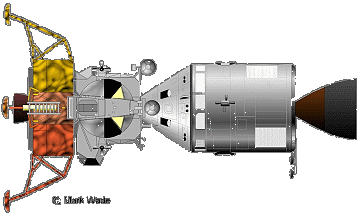 |
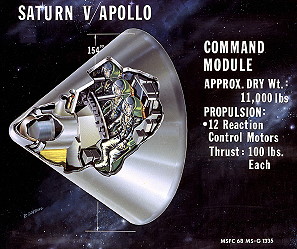 |
|
Source: www.astronautix.com/ |
|
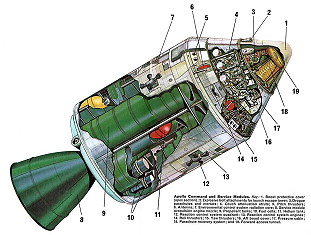 |
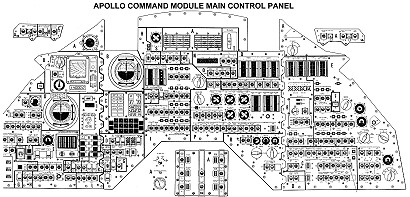 |
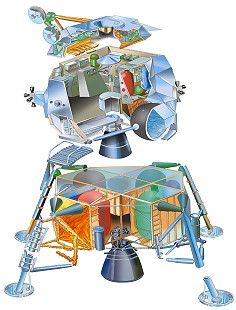 |
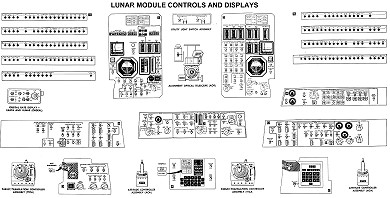 |
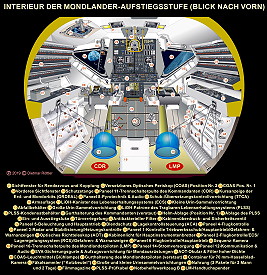 |
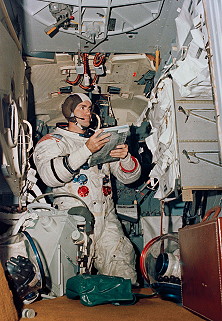 |
 |
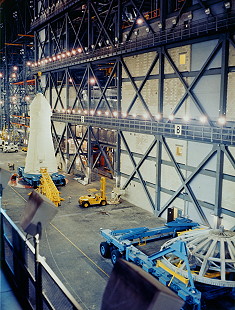 |
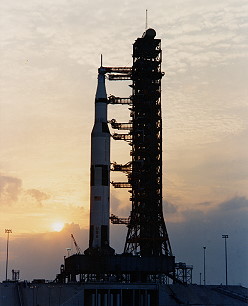 |
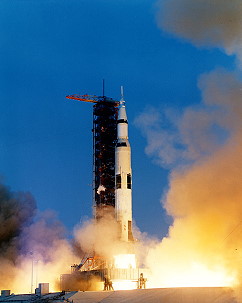 |
 |
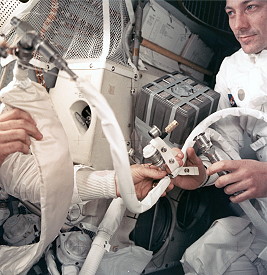 |
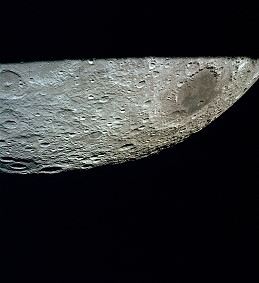 |
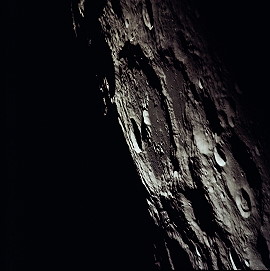 |
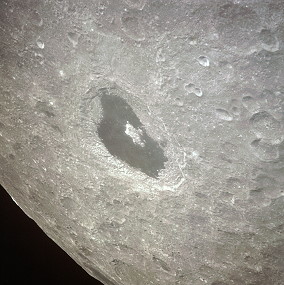 |
 |
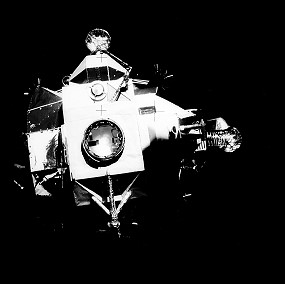 |
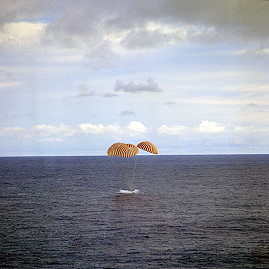 |
 |
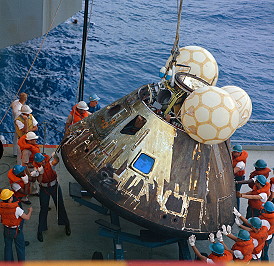 |
more Moon observation photos |
|
| © |  |
Last update on July 09, 2023.  |
 |